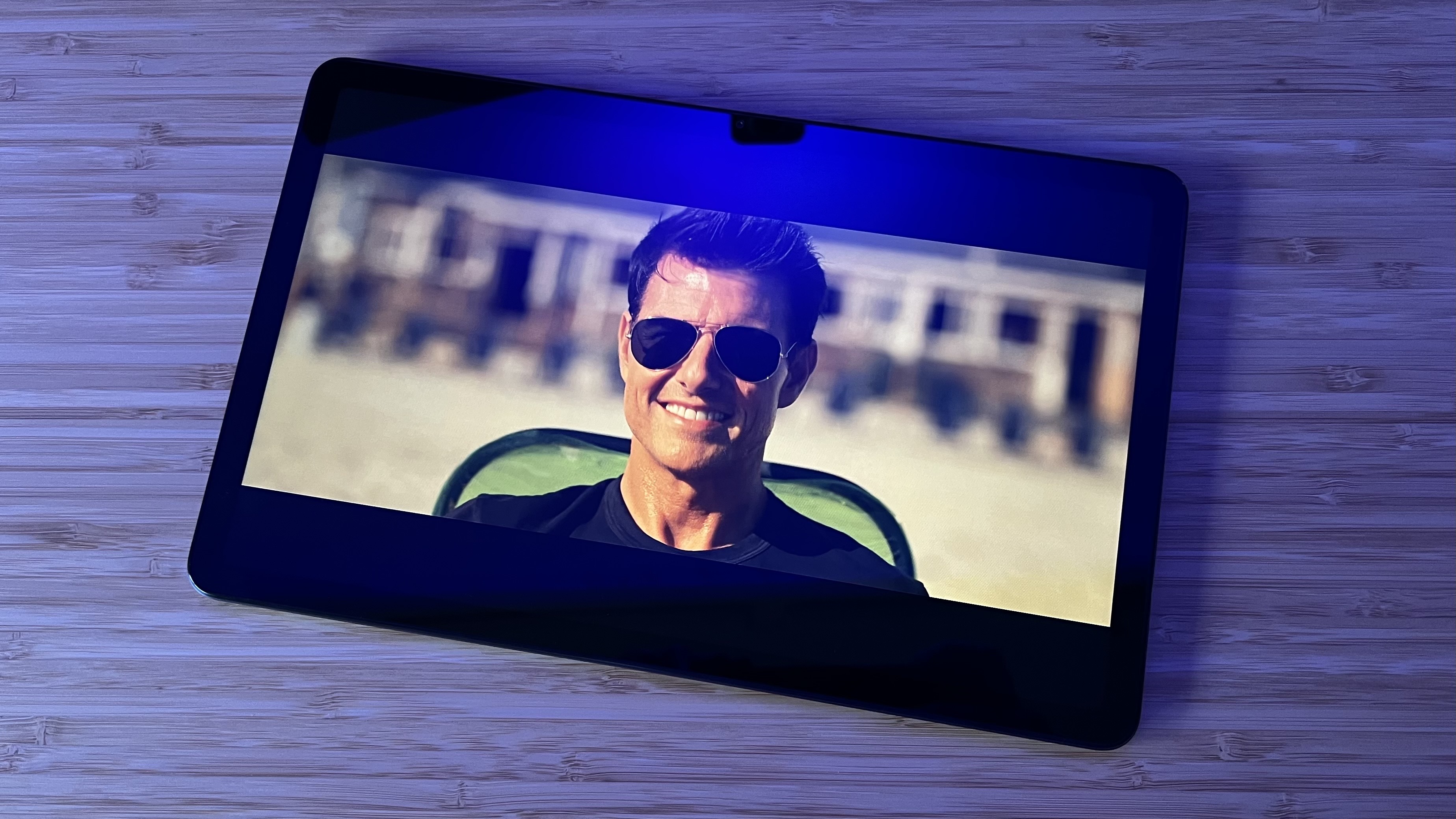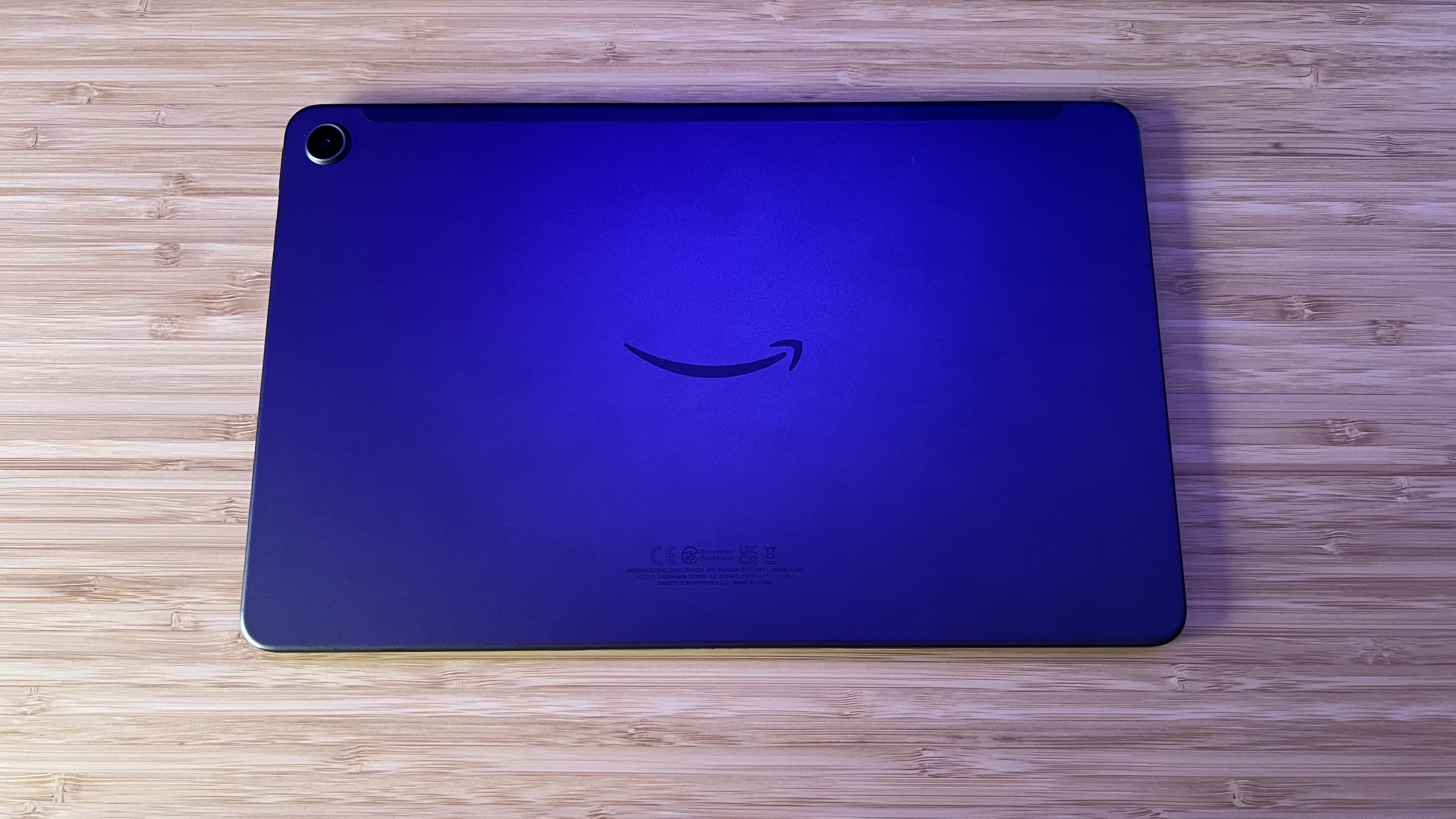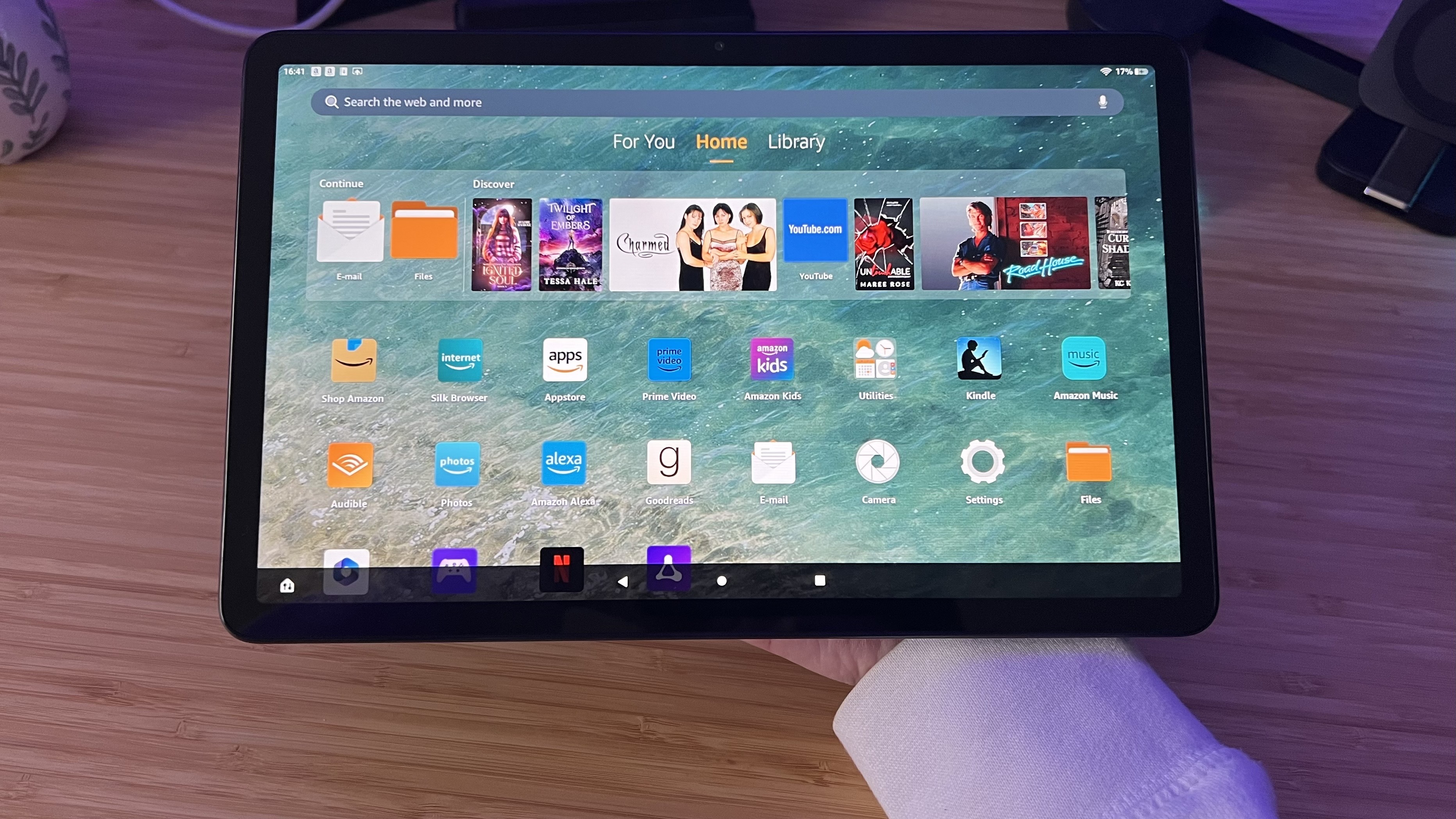GamesRadar+ Verdict
The Amazon Fire Max 11 looks and feels great - it's just a shame you can't do anything with it. An obtuse operating system keeps the Max 11's hardware from truly shining as bright as its potential suggests, though those after an all-streaming device will be pleased with its upgrades.
Pros
- +
Crisp, bright display
- +
Premium look and feel
- +
Better keyboard connectivity options
- +
Solid battery life
Cons
- -
Too few apps supported in Fire OS
- -
Very slow charging
Why you can trust GamesRadar+
The Amazon Fire Max 11 is the retailer's most expensive tablet, and its most powerful to date. That said, with a traditionally cheaper range of budget tablets on the shelves that's not exactly saying much. The 11-inch device comes packed into a far more premium chassis, and boasts a boosted spec sheet, camera system, and accessory support. While its MSRP is unlikely to sway many away from the similarly priced iPad 9th generation, those after a media streamer within Amazon's ecosystem will be pleased with the upgrades.
Still, I wouldn't recommend the Amazon Fire Max 11 to the vast majority of prospective tablet buyers and there's one pretty obvious reason; Fire OS. This is a restrictive operating system that has always struggled to keep up with both new-gen Android and iPad OS. The best gaming tablets come in all shapes and sizes, so I spent three weeks using the Fire Max 11 to see just what it's got under the hood.
| Price | $229.99 - $279.99 / £249.99 - £299.99 |
| Display | 11-inch |
| CPU | MediaTek MT8188J |
| RAM | 4GB |
| Storage | 64GB | 128GB |
| Battery | Up to 14 hours |
| Ports | USB-C, keyboard connector |
| Camera | 8MP front, 8MP rear |
Design
There's nothing particularly flashy going on in the design department here, but if you're more used to Amazon's previous HD 10 and HD 8 devices you'll appreciate the robust build. Gone are the softer plastics and flexible shells, this is a full aluminum device. The light gray colorway goes far to make everything feel more luxurious in the hand, and gentle rounded corners combined with a slimline 7.5mm thickness makes the Fire Max 11 comfortable even when held in one hand for a considerable period of time. It's only slightly heavier than the iPad 9th generation at 490g compared to 487g.

The tablet itself is more squared off around the edges than previous iterations, providing an aesthetic more inline with recent Apple and Samsung design languages. By contrast, the HD 10 still keeps that bubble physicality that otherwise died off around five years ago.
The entire device feels particularly sturdy in the hand, with a reassuring weight and just the right screen size for both multi-tasking and one-handed use. Bezels don't impinge on that display quite as hard as they do on the HD 10, and while they're larger than you'll find on a more expensive device they don't feel too letterboxing in practice.
Features
There are a handful of new features hitting the Fire Max 11 that may tempt some users away from the cheaper Fire HD 10. These are largely designed around productivity, though, and as we'll see the operating system itself works just as hard to push back against this use-case. Still, you'll find new pogo pins lining the bottom of the device connecting to the keyboard case should you pick it up separately - miles better than the Bluetooth options of yore. Meanwhile, there's also a fingerprint reader on the main power buttons, boosted 8MP cameras on both the front and rear for better video calls, and up to 128GB of storage space (with a MicroSD card slot capable of housing up to 1TB).
Those are some solid additions, but only the expandable storage is currently one-upping Apple's 9th generation iPad which can often be found at just $20 more than the cheapest Fire Max 11.

The display itself is, obviously, the crowning glory of the Fire Max 11. Its 2,000 x 1,200 resolution panel runs at a 213ppi density which makes for a particularly crisp experience, even if the 60Hz refresh rate drops the slick motion handling you'll find on other models. It's a nicely bright panel, and I was able to enjoy movies and TV both indoors and out. It's obvious that this is a device built for watching movies - there's a lot of attention to detail in the screen's color management and contrast, especially when relative to the emphasis Amazon is placing on internal components.
4GB RAM and a MediaTek MT8188J processor aren't going to get you very far these days. Sure, the Fire Max 11 is snappy and responsive for light everyday tasks, and was even up to the job of multitasking between a handful of apps. However, there are tablets out there with far heavier internals that can undertake far more demanding workflows.
Let's not blame everything on those specs, though. After all this level of power is par for the course at this low a price point. Instead, it should really be the operating system in the firing line.
Amazon's version of an outdated Android OS, running only Bezos's apps and restricting any others by implementing its own proprietary app store, was never going to be a crowd pleaser. In the case of the Fire Max 11 it slices at the ankles of what could have been a fantastic device.

After all, the screen looks fantastic and you've got a slick professional build quality running throughout. With no Google services, no access to the majority of productivity and game apps traditionally available on the Play Store, and many actually supported apps not being optimized for the device's screen, a lot of productivity and gaming processes are out the window. You'll be looking for workaround apps, third party fudge attempts at iPad OS staples, and Android-like services to get a day's work going on this device, and we shouldn't have to work this hard just to work in 2024.
Those after a gaming tablet do have some reprieve in the form of Amazon Luna, the brand's dedicated game streaming service. This takes the strain off the Fire Max 11's internal specs (and app store), allowing those who pay for the service a number of different titles to stream using the Luna Controller. This service is similar to Game Pass, though the base level is considerably cheaper while offering fewer titles. It's also available on other devices if you're putting productivity first as well.
Performance
For its OS sins, the Amazon Fire Max 11 actually runs pretty well day to day. Animations and app loads are snappy and feel smooth under the hand, with multi-tasking workflows posing no problem for the system as long as the load is light enough. I didn't experience too many app crashes during my testing, and things only started to stutter when running particularly high-spec games. It's a night and day boost in performance compared to the Amazon Fire HD 10 I was testing against, but you'll find a similar, and often slightly better when it comes to chunkier apps, everyday experience from the 9th generation iPad.
Battery life is pretty solid as well. I was able to squeeze around 12 hours of Netflix streaming, gameplay, and the odd reading session out of the device before needing to plug in. Actually charging is a slightly different story - this thing sips battery, and needs a good chunk of time to actually fully juice up.
Should you buy the Amazon Fire Max 11?

If the iPad 9th generation is, as it so often is these days, on sale for $249 - $259 then there's no reason to be buying the Amazon Fire Max 11. Yes, it has a few Alexa fancy features, but there's not much in here that can't be achieved by running the Alexa app on a far more capable operating system and if it's a smart home hub you're after your cash is much better placed with the cheaper Fire HD 10. This is low to mid-range hardware, with a budget operating system, and a price tag that can't keep up with the likes of Lenovo, Apple or even Samsung's cheaper devices.
Even if you're a die-hard Fire fan looking for a productivity upgrade, the total $369.99 you'll be spending on the 'productivity bundle' is far from the value you'll find by opting for a competitor's device.
In fact, the only scenario in which I'd recommend the Fire Max 11 is one of streaming. If you're solely after a device to watch all your favorite movies and shows, but still want a larger display and more premium build quality than the HD 10 this is a solid pick. It's got the screen chops to compete and, thankfully, streaming apps aren't among those penalized by the Fire OS system.
How we tested the Amazon Fire Max 11
I used the Amazon Fire Max 11 for all my streaming and reading over the course of three weeks, while also dipping in and out of the Luna gaming service. I also attempted a couple of days work on the device using a Bluetooth keyboard, while also testing against the Fire HD 10, 9th generation iPad, and iPad Air (2020). For more information on how we make our recommendations, check out the full GamesRadar+ Hardware Policy.
If you're after something a little smaller, check out the best gaming phones on the market right now. We're also rounding up the best mobile controllers and the best gaming handhelds for more portable play.

Managing Editor of Hardware at GamesRadar+, I originally landed in hardware at our sister site TechRadar before moving over to GamesRadar. In between, I've written for Tom’s Guide, Wireframe, The Indie Game Website and That Video Game Blog, covering everything from the PS5 launch to the Apple Pencil. Now, i'm focused on Nintendo Switch, gaming laptops (and the keyboards, headsets and mice that come with them), PS5, and trying to find the perfect projector.



